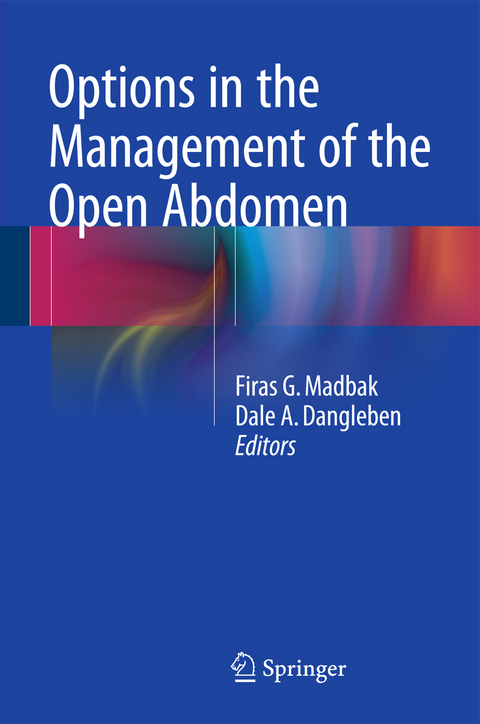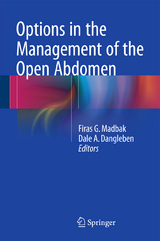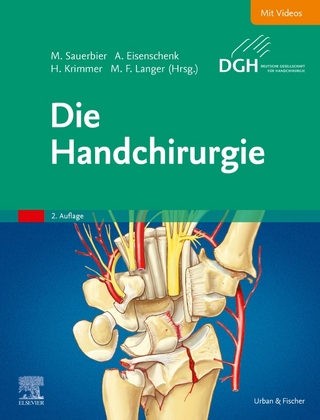Options in the Management of the Open Abdomen
Seiten
2014
|
2015 ed.
Springer-Verlag New York Inc.
978-1-4939-1826-3 (ISBN)
Springer-Verlag New York Inc.
978-1-4939-1826-3 (ISBN)
This ambitious textbook on the management of the open abdomen provides a practical approach for addressing this complex problem.
One of the more unique aspects of this textbook is its detailed “How to” approach for the wide variety of techniques utilized in the management of the open abdomen.
This book by Madbak and Dangleben has collated lot of information that has been presented and published in many disparate arenas into a single easy to read source. In an area where there is more experience and “favorite techniques” than true evidence based answers, they provide a wealth of information along with outstanding photographic support that makes this an excellent resource for all surgeons caring for this population. Similar to many things in life, when treating patients with the open abdomen one size or methodology does not fit all and this book will assuredly contain at least one possible answer to your patient’s problem.
Although the numbers of “open abdomens” are decreasing due to changes in resuscitation and transfusion practices, it still represents a complex complication that can be challenging to deal with. This ambitious textbook on the management of the open abdomen provides a practical approach for addressing this complex problem.
One of the more unique aspects of this textbook is its detailed “How to” approach for the wide variety of techniques utilized in the management of the open abdomen. While there may be no consensus as to what constitutes the optimal management of the open abdomen, this book articulates a number of options and their advantages. Most importantly, it provides high quality photographs that enhance the step by step “How to” approach of the text. More recent developments including using biologic mesh, implementing complex abdominal wall reconstruction and utilizing minimally invasive endoscopic techniques are described. This book is not only appropriate for all practicing surgeons that deal with this complex issue, but is also relevant for residents and fellows who arejust getting their first exposure to open abdomens.
One of the more unique aspects of this textbook is its detailed “How to” approach for the wide variety of techniques utilized in the management of the open abdomen.
This book by Madbak and Dangleben has collated lot of information that has been presented and published in many disparate arenas into a single easy to read source. In an area where there is more experience and “favorite techniques” than true evidence based answers, they provide a wealth of information along with outstanding photographic support that makes this an excellent resource for all surgeons caring for this population. Similar to many things in life, when treating patients with the open abdomen one size or methodology does not fit all and this book will assuredly contain at least one possible answer to your patient’s problem.
Although the numbers of “open abdomens” are decreasing due to changes in resuscitation and transfusion practices, it still represents a complex complication that can be challenging to deal with. This ambitious textbook on the management of the open abdomen provides a practical approach for addressing this complex problem.
One of the more unique aspects of this textbook is its detailed “How to” approach for the wide variety of techniques utilized in the management of the open abdomen. While there may be no consensus as to what constitutes the optimal management of the open abdomen, this book articulates a number of options and their advantages. Most importantly, it provides high quality photographs that enhance the step by step “How to” approach of the text. More recent developments including using biologic mesh, implementing complex abdominal wall reconstruction and utilizing minimally invasive endoscopic techniques are described. This book is not only appropriate for all practicing surgeons that deal with this complex issue, but is also relevant for residents and fellows who arejust getting their first exposure to open abdomens.
Dale A. Dangleben, MD Lehigh Valley Health Network Lehigh Valley Physician Group Allentown, PA USA Firas G. Madbak, MD University of Pennsylvania Perelman School of Medicine Trauma & Surgical Critical Care The Reading Hospital West Reading, PA USA
Historical Perspective.- Damage Control.- Abdominal Compartment Syndrome.- Types of Closure.- The Biologics Explosion Era.- Considerations in Abdominal Wall Reconstruction.- Endoscopic Component Separation for Ventral Hernia Repair.- Complications.
| Zusatzinfo | 34 Illustrations, color; 1 Illustrations, black and white; XVIII, 82 p. 35 illus., 34 illus. in color. |
|---|---|
| Verlagsort | New York |
| Sprache | englisch |
| Maße | 155 x 235 mm |
| Themenwelt | Medizinische Fachgebiete ► Chirurgie ► Ästhetische und Plastische Chirurgie |
| Medizinische Fachgebiete ► Chirurgie ► Viszeralchirurgie | |
| Schlagworte | Abdominal Compartment Sydrome • Abdominal Wall Reconstruction • Abscess • Abthera • Barker Vac Pack • Biologic Mesh • bladder pressure • Bogota Bag • Bowel edema • Component Seperation • Damage control • Decompressive Laparotomy • Endoscopy • enteroatmospheric • enterocutaneous • Fistulae • Hernia • History • Infection • Laparoscopy • Large Xenoderm matrix • Operative Stages • Sepsis • STSG • Synthetic Mesh • TAWT • Wittmann patch • Zipper Closure |
| ISBN-10 | 1-4939-1826-5 / 1493918265 |
| ISBN-13 | 978-1-4939-1826-3 / 9781493918263 |
| Zustand | Neuware |
| Haben Sie eine Frage zum Produkt? |
Mehr entdecken
aus dem Bereich
aus dem Bereich
Der Klassiker kompakt zusammengefasst: 4 Bände, inklusive 1 DVD
Buch | Hardcover (2014)
Lehmanns Media / Elsevier (Verlag)
CHF 289,95




